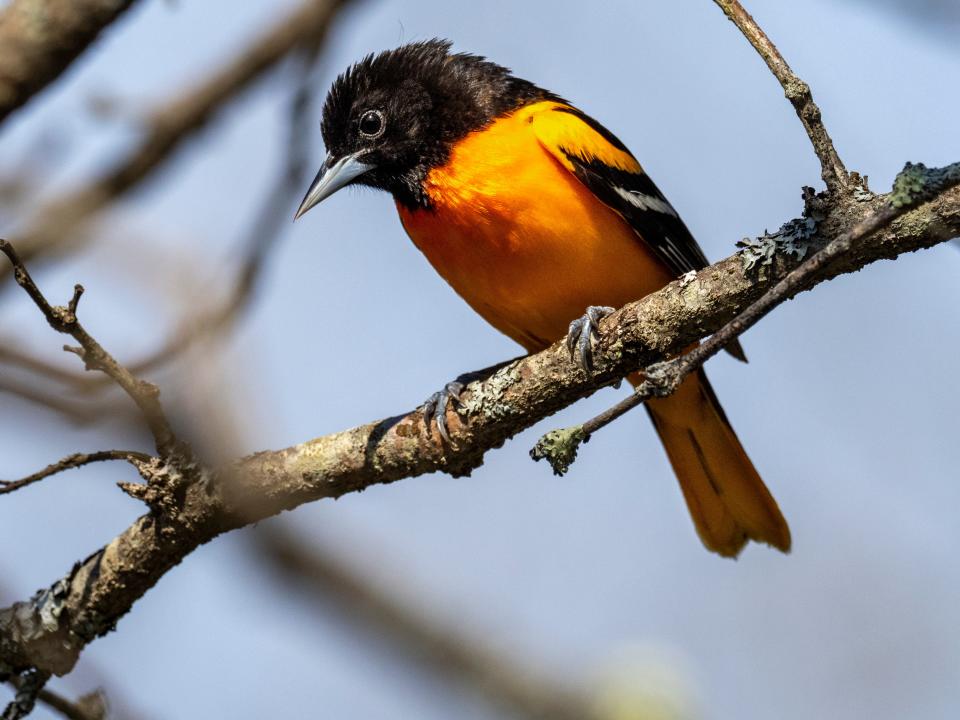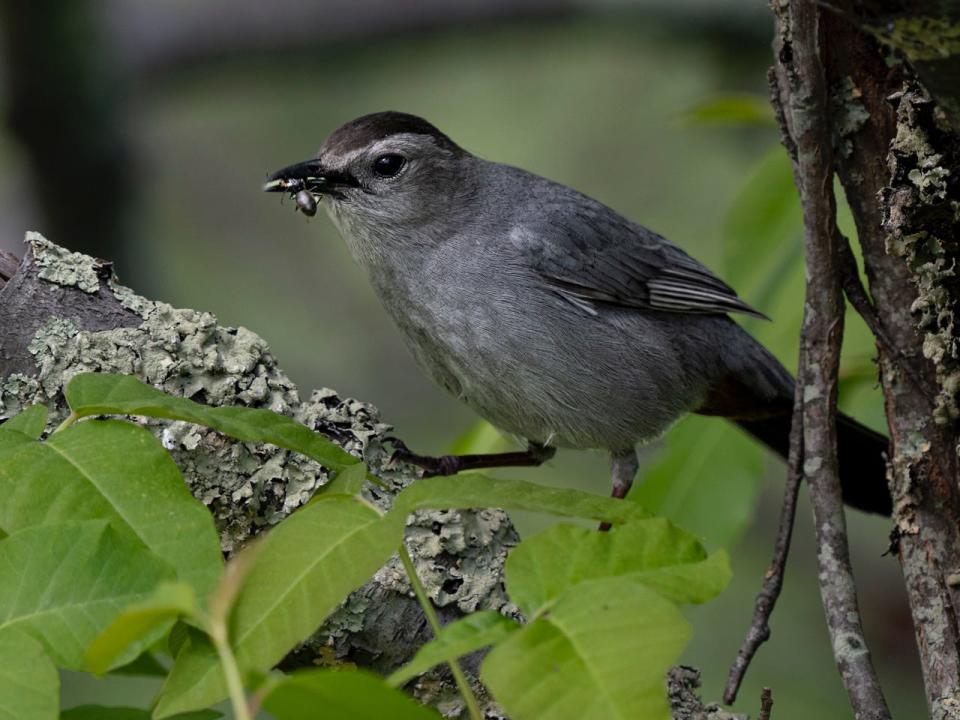Arrival of orioles and catbirds herald the return of insect season
We started putting orange halves out for the Baltimore orioles a couple weeks ago and while a pair did show up and now stop by every day to pick at the fruit, the most frequent visitor to the oranges are catbirds.
These are two very different birds. Orioles (males) are a vibrant showy orange, black, and white while catbirds are an understated slate gray all over with a dark cap and rust under the tail. Like the overstated Baltimore oriole, you really can’t confuse them with any other bird. They are the only North American bird with uniform gray plumage.

The songs of these two species are also very different. Both are migratory, arriving in our area in time for the insects. Cornell Lab’s “All About Birds” refers to the pure, liquid, whistling tones of the male Baltimore Oriole as a herald of springtime in eastern North America. The same could be said for the catbird's jumbled mix of whistles, squeaks, gurgles, whines, imitations of other birds songs and frogs, even mechanical sounds as well as their characteristic raspy “mew” (hence the name catbird).

To me, having both of these birds, along with a slew of others, come to my feeders (which I’ll be taking down soon to avoid attracting bears) makes me happy that we have such diversity of life in our backyards and that this diversity has managed to adapt fairly well to humans. Both of these birds like the kind of open woodland and forest edge that are common in the suburbs. Baltimore orioles make those distinctive pendulous nests high in deciduous trees, often dangling over roads, rivers or fields, while catbirds prefer the thickets we provide when we cut down forests and let tangles of shrubs and vines proliferate at the edges of our lawns and roadsides.
Sadly, the diversity and abundance of bird life in my backyard pales in comparison to what was here in pre-colonial times. One thing we can all do, if we own a home in the suburbs (or city or countryside) is to plant native species that provide food and habitat for our birds. Bird feeders can both help and hurt - disease transmission can be very high at feeding stations where large numbers of birds congregate and co-mingle. Keeping feeders clean helps with that. But I think the feeders are worth it. The extra calories bird feeders provide can help balance all the other stressors humans have imposed on birds.
Over the years my approach to feeding has evolved. I try to avoid giving birds the equivalent of junk food. I used to put out the cheapest grape jelly for orioles, but realizing I wouldn’t eat this myself, switched to jelly with organically grown grapes and no artificial flavors, colors or sweeteners. More recently I stopped offering jelly in favor of fruit since that is a more natural source of sugar. In addition to oranges, Baltimore orioles love dark fruit and will bypass green grapes for purple ones, and will wait for cherries and mulberries to get as ripe, and dark, as possible.
Catbirds love all kinds of fruit from wild berries to cultivated fruit so much so that they can even become a pest and destroy crops. I like to put out raisins for the catbirds. Catbirds really, really love soaked raisins, but most any kind of fruit will do. That said, in the summer, the young nestlings of both species are fed almost entirely on insects which provide the protein needed for growth so those oranges and raisins are most likely adult fare.
The arrival of the orioles, catbirds and other migrants don’t so much herald spring as they do insect season. I try to remember that when I am chased inside by swarms of black flies, mosquitoes or deer flies. These bugs attract more birds to my backyard than any bird feeder can.

Susan Pike, a researcher and an environmental sciences and biology teacher at Dover High School, welcomes your ideas for future column topics. She is looking for readers to send her the signs of spring they're noticing so she can document them on her website pikes-hikes.com. Send your photos and observations to spike3116@gmail.com. Read more of her Nature News columns online at Seacoastonline.com and pikes-hikes.com, and follow her on Instagram @pikeshikes.
This article originally appeared on Portsmouth Herald: Arrival of orioles and catbirds herald the return of insect season

